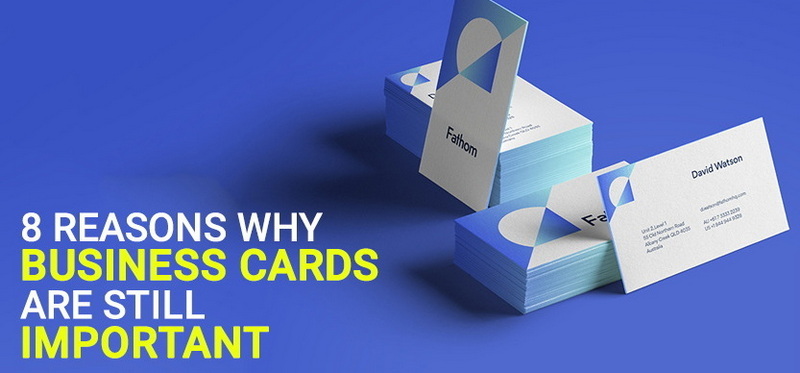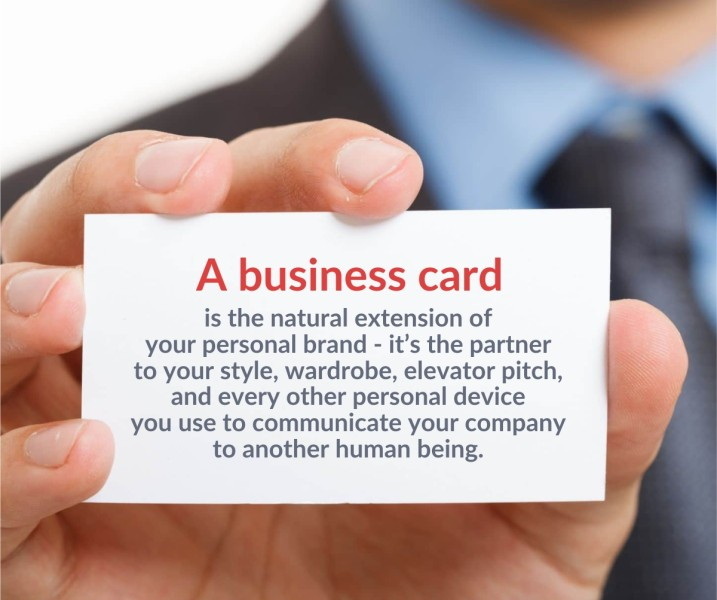Content Menu
● The Evolution of Business Cards
● The Role of Business Cards in Networking
>> Creating Meaningful Connections
>> Enhancing Brand Identity
● Designing Effective Business Cards
● The Cost-Effectiveness of Business Cards
● Business Cards in a Digital World
● The Environmental Considerations of Business Cards
● Conclusion
● Frequently Asked Questions
>> 1. Why Are Business Cards Still Relevant in the Digital Age?
>> 2. What Information Should Be Included on a Business Card?
>> 3. How Can I Make My Business Card Stand Out?
>> 4. Are Business Cards Cost-Effective?
>> 5. Can Business Cards Be Used in Conjunction with Digital Marketing Strategies?
● Citations:
Business cards have been a staple in professional networking for centuries, evolving from simple calling cards to sophisticated marketing tools. Despite the rise of digital communication, business cards remain crucial for establishing personal connections, enhancing brand identity, and facilitating networking opportunities. This article explores the importance of business cards in the modern business landscape and discusses their role in creating lasting impressions and fostering professional relationships.

The Evolution of Business Cards
Historically, business cards originated as "calling cards" in the 15th century, used by the upper class to announce their intention to meet. By the 17th century, "trade cards" became common in London, providing information about businesses and their services. These early cards were often signed and considered legally binding, highlighting their significance in business interactions. Today, business cards have evolved to include a wide range of designs and functionalities, from traditional paper cards to innovative materials like wood or metal, and even functional items such as bottle openers or seed packages. The evolution reflects not only changing social customs but also advancements in printing technology and design aesthetics. Early cards were often hand-engraved, making them exclusive and costly. The advent of mass printing techniques in the 19th century democratized their use, making them accessible to a broader range of professionals and businesses.
The Role of Business Cards in Networking
Networking is a critical aspect of business success, and business cards play a pivotal role in this process. They serve as tangible reminders of personal interactions, allowing individuals to recall conversations and connections more effectively than digital exchanges. In a world dominated by digital communication, the physicality of a business card adds a human touch to professional interactions, making them more memorable and personal. Business cards facilitate spontaneous connections at conferences, seminars, and casual meetings. Handing someone a business card is a gesture of openness and a willingness to connect further, signaling that you are approachable and interested in building a professional relationship. They are also invaluable in settings where digital devices are inappropriate or impractical, such as formal events or locations with limited connectivity.
Creating Meaningful Connections
Business cards facilitate meaningful connections by providing a quick and efficient way to exchange contact information. Unlike digital methods, which can be impersonal and easily forgotten, business cards leave a lasting impression. They are often shared among colleagues or friends, further expanding your network and marketing reach. The act of physically exchanging a card creates a brief but significant moment of interaction. It allows you to make eye contact, share a few words, and establish a personal connection that transcends a simple digital exchange. Moreover, a business card in hand is less likely to be overlooked compared to an email or LinkedIn request, ensuring that your contact information is readily available to the recipient.
Enhancing Brand Identity
A well-designed business card is not just a tool for sharing contact details; it is also a representation of your brand's identity. It includes essential elements such as your name, company logo, job title, and contact information, all presented in a way that reflects your brand's personality and values. This visual representation helps establish credibility and professionalism, making your business more recognizable and memorable. The design elements, such as color scheme, font, and layout, contribute to the overall perception of your brand. A minimalist design might convey sophistication and efficiency, while a bold and colorful design could signal creativity and innovation. The choice of paper stock and finish can also enhance the tactile experience, adding another layer to your brand's identity.

Designing Effective Business Cards
Creating an effective business card involves several key considerations:
1. Target Your Audience: Tailor your card's design and content to resonate with your target audience. For instance, a carpenter might include a relevant image to showcase their expertise. Understanding your audience's preferences and expectations is crucial for creating a card that appeals to them. A business targeting high-end clients might opt for a luxurious design with premium materials, while a startup targeting a younger demographic might choose a more contemporary and playful design.
2. Readability: Use simple, easy-to-read fonts like Times New Roman or Arial. Ensure text size is sufficient for easy reading, especially if you have a lot of information to display. Avoid overly decorative or stylized fonts that can obscure the information. Consistency in font usage across all your branding materials can also strengthen your brand identity.
3. Essential Information: Include your name, company name, job title, and contact details. Consider adding a QR code that links to your website or social media profiles. Make sure all the information is accurate and up-to-date. Including a QR code provides a convenient way for recipients to access more information about your business and connect with you online.
4. Design Principles: Follow basic design guidelines such as using the CMYK color model and ensuring a resolution of 300 dpi for clear image reproduction. Keep the main copy at least 5 mm from the edge of the trim to avoid cutting errors. Attention to detail in design ensures that your card looks professional and well-crafted. Using high-quality images and graphics can also enhance the visual appeal of your card.
5. Creativity and Functionality: Consider adding unique features like foil accents, glossy coatings, or even functional elements like a bottle opener to make your card stand out. Innovative designs can capture attention and make your card more memorable. However, ensure that the added features are relevant to your brand and do not compromise the card's functionality.
The Cost-Effectiveness of Business Cards
Despite the digital age, business cards remain a cost-effective marketing strategy. They are inexpensive to produce and can be carried easily to any event or meeting, making them a versatile tool for networking and branding. Unlike digital marketing methods, which often require significant investment and technical expertise, business cards provide a straightforward way to promote your business without breaking the bank. For small businesses and startups with limited marketing budgets, business cards offer a tangible and affordable way to reach potential clients and partners. They can be distributed at trade shows, conferences, and local events, providing a direct and personal way to introduce your business to new audiences.
Business Cards in a Digital World
In an era where digital interactions dominate, business cards offer a refreshing contrast by providing a tangible, personal element to networking. They serve as a physical reminder of a conversation, allowing recipients to recall interactions more vividly than digital exchanges. Moreover, business cards can complement digital marketing strategies by including QR codes or URLs that direct recipients to online platforms, thereby bridging the gap between offline and online interactions. The integration of business cards with digital tools can enhance their effectiveness. For example, apps that scan business cards and automatically add the contact information to your digital address book streamline the process of organizing and managing your contacts. This combination of physical and digital interactions ensures that your business card remains relevant and useful in the modern business environment.
The Environmental Considerations of Business Cards
While business cards are effective, it's also important to consider their environmental impact. Traditional paper cards contribute to deforestation and waste. Opting for eco-friendly materials such as recycled paper, bamboo, or seed paper can significantly reduce your carbon footprint. Seed paper, embedded with plant seeds, offers a unique and sustainable alternative, allowing recipients to plant the card and grow flowers or herbs. Additionally, consider printing fewer cards and focusing on quality over quantity.
Conclusion
Business cards are more than just pieces of paper; they are powerful tools for networking, branding, and creating lasting impressions. Their ability to facilitate personal connections, enhance brand identity, and serve as a cost-effective marketing strategy ensures their relevance in today's digital landscape. Whether you are an entrepreneur or a seasoned professional, a well-designed business card is an indispensable asset in your professional toolkit. As we navigate an increasingly digital world, the human touch provided by a physical business card can set you apart and foster meaningful professional relationships.

Frequently Asked Questions
1. Why Are Business Cards Still Relevant in the Digital Age?
Business cards remain relevant because they provide a personal touch to networking, serve as effective branding tools, and offer a tangible reminder of professional interactions. Unlike digital exchanges, which can be impersonal and easily forgotten, business cards leave a lasting impression and can be shared among others, further expanding your network. The physical exchange of a card fosters a connection that is often missed in digital communication.
2. What Information Should Be Included on a Business Card?
A business card should include essential information such as your name, company name, job title, contact details (phone number, email address, physical address), and social media profiles. Consider adding a QR code that links to your website or online store for easy access. Ensuring that the information is accurate and up-to-date is crucial for maintaining credibility.
3. How Can I Make My Business Card Stand Out?
To make your business card stand out, consider using unique materials, designs, or functionalities. This could include foil accents, glossy coatings, or even functional elements like a bottle opener. Additionally, ensure your card reflects your brand's personality and is easy to read. Creative and innovative designs can capture attention and make your card more memorable.
4. Are Business Cards Cost-Effective?
Yes, business cards are cost-effective. They are inexpensive to produce and can be easily carried to any event or meeting, making them a versatile tool for networking and branding without requiring significant investment. For small businesses and startups, business cards offer an affordable way to reach potential clients and partners.
5. Can Business Cards Be Used in Conjunction with Digital Marketing Strategies?
Absolutely, business cards can complement digital marketing strategies. By including QR codes or URLs on your card, you can direct recipients to your online platforms, bridging the gap between offline and online interactions and enhancing your overall marketing reach. This integration of physical and digital tools ensures that your business card remains relevant and useful.
Citations:
1. https://aura-print.com/usa/blog/post/business-cards-are-still-relevant
2. https://www.indeed.com/career-advice/career-development/business-card-tips
3. https://bbs.gter.net/forum.php?mod=viewthread&action=printable&tid=402330
4. https://www.usf.edu/pcgs/documents/importance-of-business-cards.pdf
5. https://www.vistaprint.com/hub/business-card-design-rules
6. https://blog.csdn.net/wizardforcel/article/details/142605418
7. https://www.unahealydesign.com/why-use-a-business-card/
8. https://www.reddit.com/r/startups/comments/7zqczc/a_few_tips_about_business_cards/
9. https://www.printingforless.com/blog/why-business-cards-are-still-important-in-the-digital-age/
































